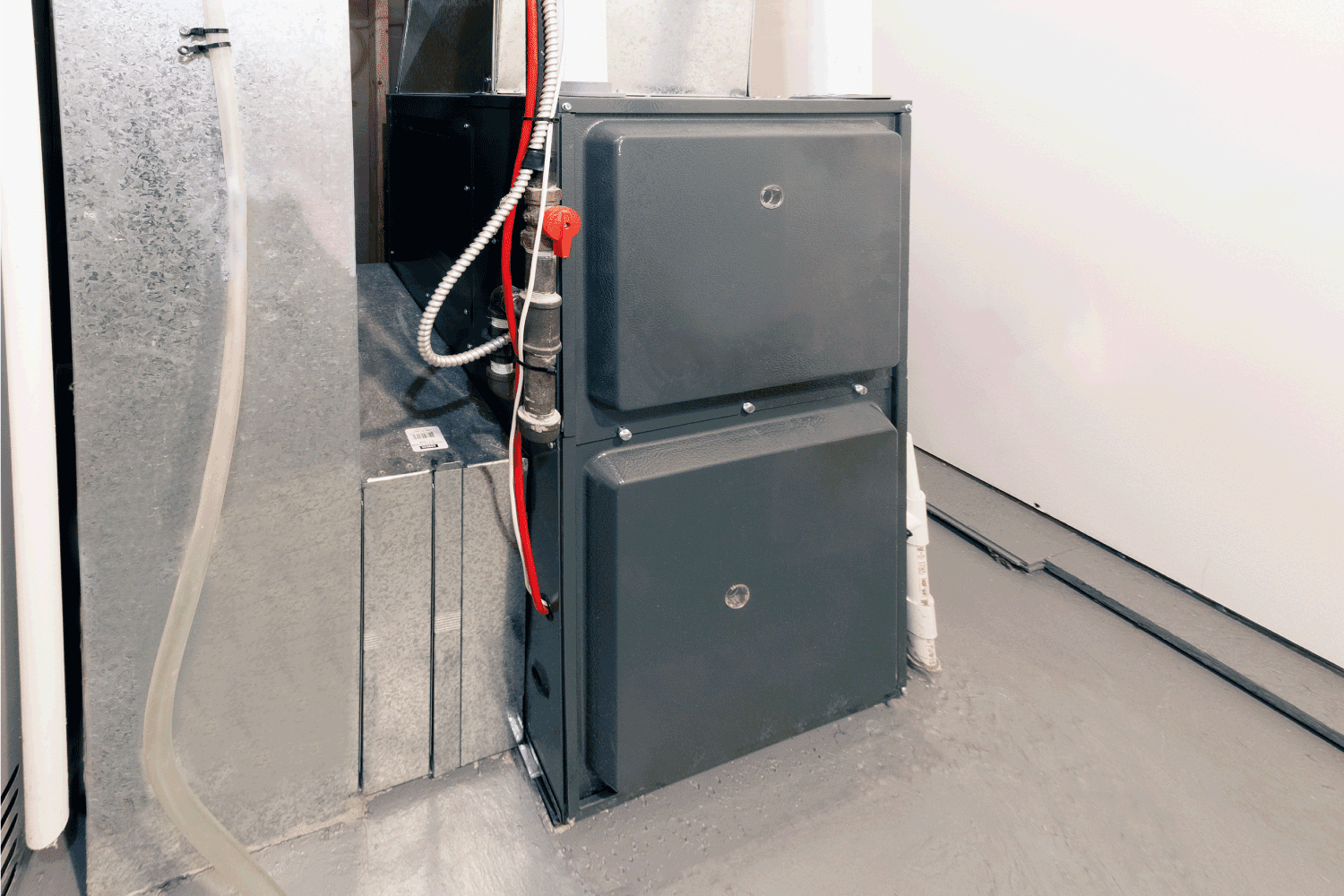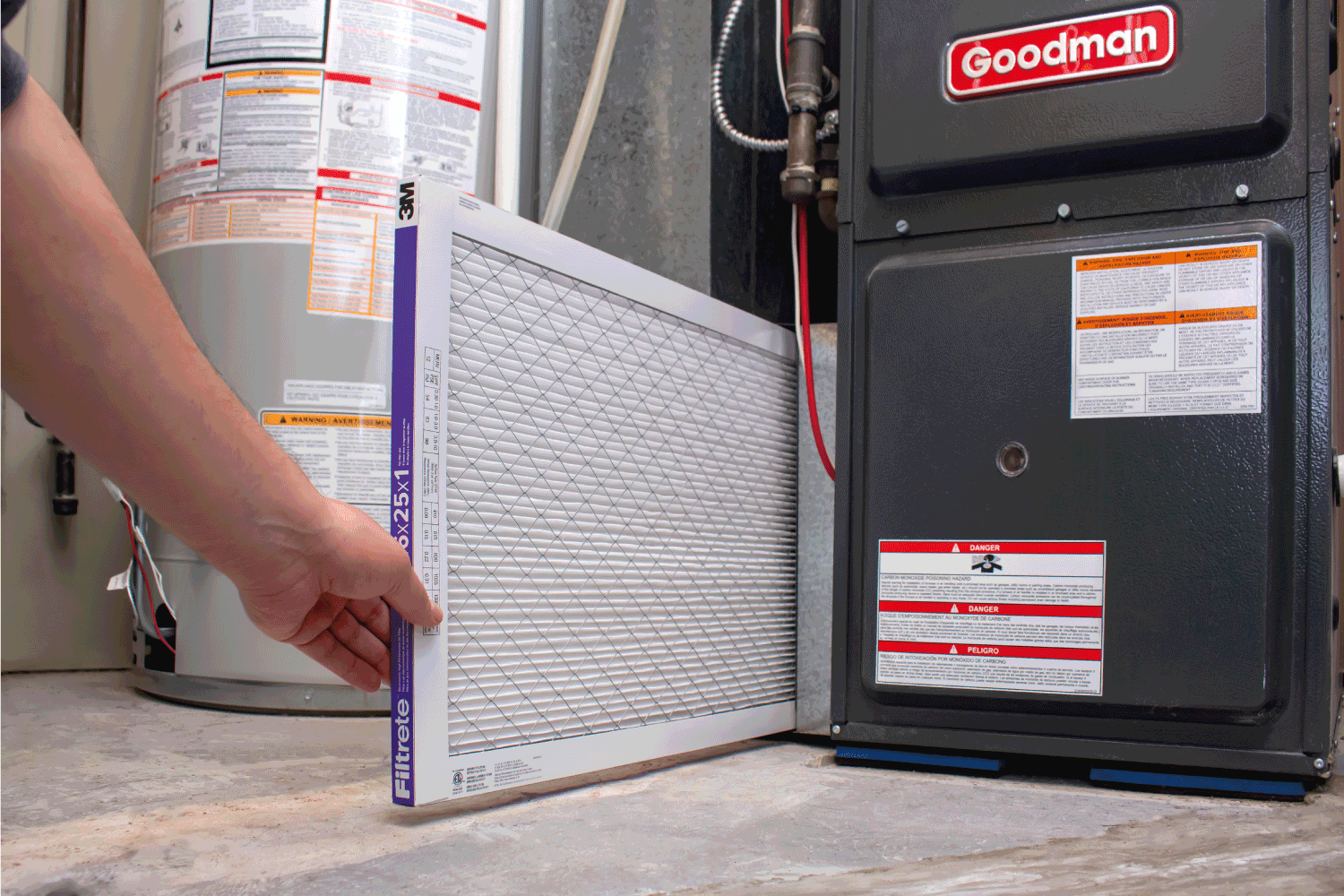Furnaces help keep the home cozy all year long. While searching for furnaces, you may come across a measure of tons or tonnage. Is this the same as the weight of the furnace? We've done the research and got the information for you.
Furnace weights and tons are different measures. Goodman furnaces come in a wide variety of models with different weights, with their most popular models ranging from 106 to 135 lbs. Tonnage refers to a furnacee's heating power. Here are the weights and tonnages of 10 of their most popular models:
- GMVM97 - weight: 129 lbs - tonnage: 5 tons
- GCVM97 - weight: 114 lbs - tonnage: 4 tons
- GCVC96 - weight: 135 lbs - tonnage: 4 tons
- GMVC96 - weight: 129 lbs - tonnage: 5 tons
- GMEC96 - weight: 114 lbs - tonnage: 2.5 tons
- GMSS96 - weight: 119 lbs - tonnage: 5 tons
- GCEC96 - weight: 118 lbs - tonnage: 3 tons
- GMES96 - weight: 105 lbs - tonnage: 4 tons
- GMSS92 - weight: 112 lbs - tonnage: 3 tons
- GMES92 - weight: 106 lbs - tonnage: 6.6 tons
- GCSS92 - weight: 114 lbs - tonnage: 2 tons
There's more to be said about choosing the right furnace for your home. We'll go over how you can make sure you're getting the right furnace for your home and climate, as well as tackle some other issues related to furnace dimensions. Read on to learn all about it!
![A home Goodman high efficiency furnace running during the winter. How Much Does a Goodman Furnace Weigh [by Model]](https://hvacseer.com/wp-content/uploads/2021/12/A-home-Goodman-high-efficiency-furnace-running-during-the-winter.-How-Much-Does-a-Goodman-Furnace-Weigh-by-Model.png)
How Many Tons Should my Furnace Be?
We've seen that tonnage is distinct from weight, but finding the right tonnage for your home can take a bit of work.
The tonnage of your furnace corresponds with its BTU input. One ton corresponds with 12,000 BTUs. Choosing the right tonnage for your furnace will depend on a number of factors: the size of your home, the climate where you live, how well insulated your house is, and more.
Typically, your furnace should have anywhere from 1.5 to 11 tons of heating power, depending on those factors.
The US Department of Energy recommends that you insist your HVAC technician use the Air Conditioning Contractors of America (ACCA) Manual J to calculate the appropriate size of your furnace and air conditioning.
There are also ACCA-approved tools, such as Cool Calc, that allow you do the complicated Manual J calculations yourself. Note that while many of these tools are free to use, they may charge you for ACCA-approved reports, printing, or other features.
How Big of a Furnace do I need for a 2,000 Square-Foot Home?
While it's impossible to get an ideal exact figure without following the ACCA's Manual J, you can get a rough estimate on your own. You simply need to know the size of the home, the local climate, and the quality of the insulation.
A 2,000 square-foot home in the US might only need a 60,000-BTU furnace for a well-insulated house in Florida climate. A poorly-insulated home in Minnesota might need a furnace that pumps out 120,000 BTUs.
Referring to this map from the Internation Energy Conservation Code, general recommendations for each zone are:
- Zones 1-2: 30-35 BTUs per square foot
- Zone 3: 35-40 BTUs per square foot
- Zone 4: 40-45 BTUs per square foot
- Zone 5: 45-50 BTUs per square foot
- Zones 6-7: 50-60 BTUs per square foot
If your home is well-insulated, use the lower number. If your home is not well insulated or you are unsure, use the higher number.
Improving the insulation of your home can save you a lot of money in the long run. For advice on this topic, check out articles from our insulation archive, such as "How to Insulate a Sloped Ceiling."

How Wide is a Goodman Furnace?
The standard width of Goodman furnaces is 17.5". This width is typical of many furnaces. Most American Standard furnaces are also 17.5" wide. However, some brands do make wider furnaces, such as the Amana AMS Series, which is 21" wide.
If you're in the market for something narrower, Goodman does also produce some smaller, compact furnaces, such as the GMES80. These furnaces are just 14" wide. While only 3.5" narrower, saving space does add up when you have limited space. This is especially true if your furnace and water tank share a room.
In terms of height and depth, there is not a big difference between compact furnaces and full-size ones. The compact GMES80 is 33.5' tall and 28' deep, whereas the full-size GMVM97 is 34.5' tall and 29' deep.
How Much Space Is Required Around a Furnace?
The amount of clearance your furnace needs will depend on the model and position of your furnace. Most Goodman furnaces require 24" of front clearance for service and cleaning. To be sure, you should always check the owner's manual for your particular model.
It is also essential that your furnace have sufficient distance from combustible materials. This is especially true if your furnace is situated horizontally instead of in an up-flow or down-flow position.
For example, the GMV97 doesn't require side clearance from combustible materials in the up-flow or down-flow position. However, you will need 6" of side clearance in a horizontal configuration.
When in doubt, it's best to leave more room around your furnace. This will help it run more efficiently and will also make basic maintenance much easier. Keeping the furnace in a larger area where it won't be in the way, such as a basement or garage, is a great option when possible.

Does the Area Around the Furnace Need to be Ventilated?
The vast majority of local building codes require that a furnace room be ventilated. Even if your local code doesn't require it, it is still highly recommended.
Furnaces work best with ventilation for several reasons, especially if you have a gas furnace. First, and most importantly, is the threat of combustion gas backflow. This could lead to carbon dioxide and, worse, carbon monoxide building up in your furnace room and even circulating into your home.
Having a ventilated furnace room is also beneficial in terms of efficiency. Natural gas furnaces rely on combustion for heating power, and that takes air. If there isn't enough airflow into your furnace room, your furnace won't run as efficiently as it could.
To get the most of their homes and their furnaces, many owners choose to put their furnaces in the garage. You can learn more about this topic and important information relating to it in our article, "Can You Put a Furnace in a Garage?"
How Many BTUs is my Goodman Furnace?
We've seen how the size and geography of your home can affect the furnace you need. What if you already have a furnace, but you don't know how powerful it is?
If you aren't sure about the BTU output of your Goodman furnace, you can always check your owner's manual. First, find the model number of your furnace. If you need to look it up, you can locate it on the rating plate on the inner wall of the furnace.
Next, look for your model number in your owner's manual. Because these manuals often cover different models, you will need to check the table for your specific model. Under the heating data section, you will find the BTU input of your furnace.
If you cannot find your manual, you can also search GoodmanMfg.com for your model. You'll be able to find general information, as well as a helpful "Dealer Specification Sheet" that will include the information you're looking for.
![A home Goodman high efficiency furnace with Bradford White Residential gas water heater & an Generalaire humidifier. How Much Does a Goodman Furnace Weigh [by Model]](https://hvacseer.com/wp-content/uploads/2021/11/Goodman-high-efficiency-furnace-with-White-Residential-gas-water-heater-an-Generalaire-humidifier.-How-Much-Does-a-Goodman-Furnace-Weigh-by-Model.png)
Final Thoughts
A furnace isn't just another appliance in your home. It's the key to having a comfortable living space when the mercury drops. Knowing how to find a furnace that's the right size and power for your home is key to keeping your home cozy. Knowing how to situate and ventilate your furnace is the key to keeping you, your home, and your loved ones safe.
Now you know a little bit more about these topics; you'll be well on your way to finding the perfect furnace for your unique situation.
